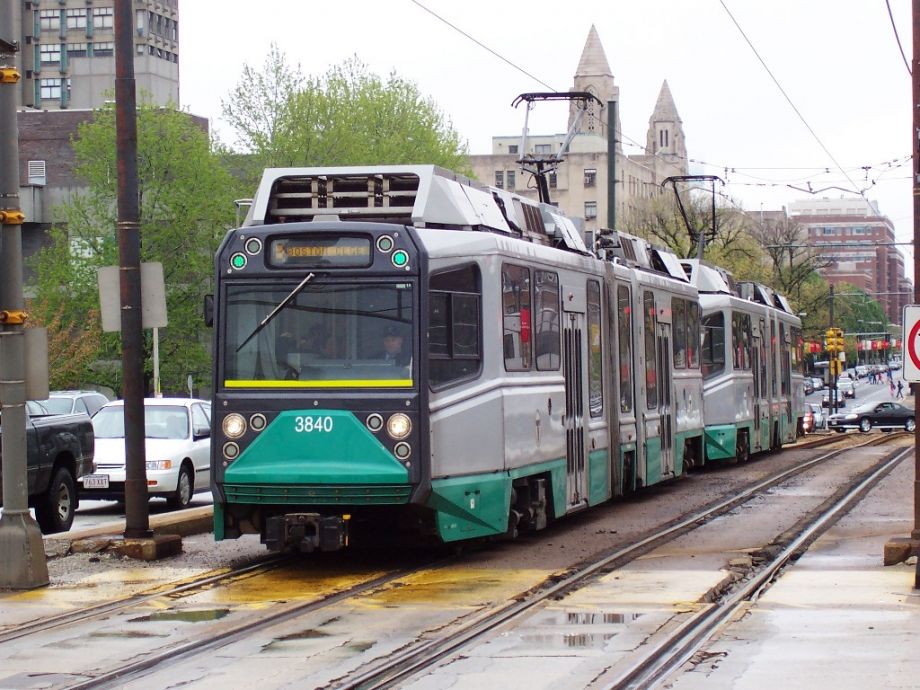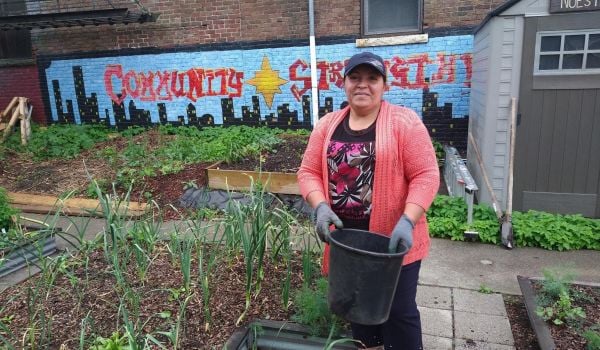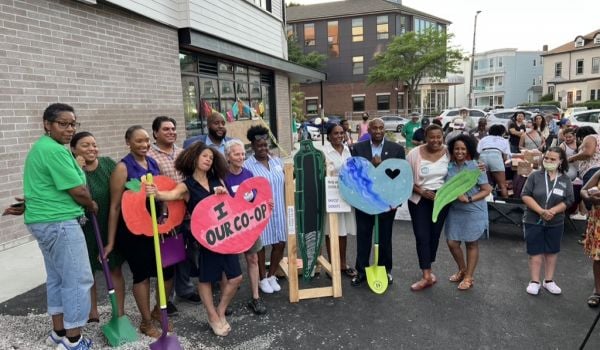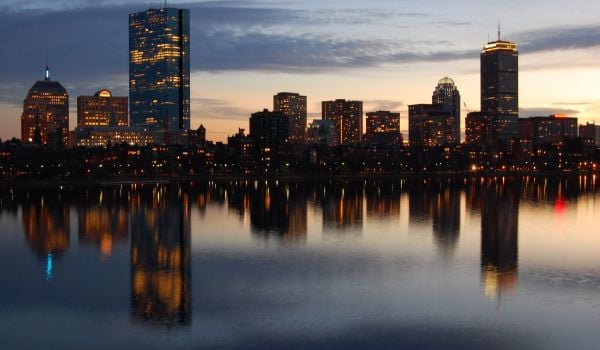After a nine-month pause to tame a $1 billion cost overrun, Massachusetts is moving forward with a slimmed-down version of the Green Line Extension light-rail project just north of Boston. The decision is a leap of faith for Boston’s struggling transit system, an affirmation that its overseers still want to expand it to meet a growing region’s needs — even as they work to improve spotty service for existing riders.
More than 200 people packed a meeting yesterday in Boston, many wearing green shirts and glowing green necklaces to support extending the region’s light-rail system 4 1/2 miles through Cambridge into Somerville and Medford. Forty-five elected officials and citizens took the mic to ask transportation officials not to cancel the project, promised 26 years ago as an environmental trade-off for the Big Dig, Boston’s massive 1990s freeway project.
“I think it would be a real disaster for the region if the Green Line did not happen,” said Cambridge City Manager Richard Rossi.
The Green Line Extension, which will add six new light-rail stations in Somerville and Medford and replace a decrepit station in Cambridge, will add about 50,000 new trips a day to Greater Boston’s transit system, which now handles 1 million trips. The project was expected to cost $2 billion when state and federal officials approved it in December 2014. But last August, cost estimates ballooned up to $3 billion, and state officials threatened to kill the project if its budget couldn’t be slashed.
Yesterday, a trimmed version estimated to cost $2.3 billion won the unanimous support of two transportation boards. Consultants slashed $600 million in costs by paring back the size of the stations, shortening a bike and pedestrian path, downsizing a maintenance facility, and using more existing bridges. Somerville and Cambridge will pay for $75 million of the project’s extra costs, in a move unprecedented for Massachusetts.
But deep questions remain over the Massachusetts Bay Transportation Authority’s ability to expand its system while also tackling its $7 billion repair and maintenance backlog.
“I think the project is important,” said Stephanie Pollack, state transportation secretary. “I do not think it is the most important thing for the MBTA to be doing in the next three years.” Its first priority, Pollack said, should be fixing the system for current riders, not adding new ones.
“If you don’t believe you can lose more than 5 percent of your ridership by spending too much on expansion and not enough on the core system, look at the Washington Metro,” Pollack warned the MBTA’s fiscal control board and the state transportation department’s board. “Ridership is substantially less than it was before they built the Silver Line [toward] Dulles Airport, because while they were doing that, they let the core fall apart.”
The Green Line Extension’s cost overruns were just one of two dire challenges that emerged in 2015 for the MBTA, the nation’s oldest and most indebted transit agency. The MBTA’s breakdown amid record snowstorms in winter 2015 caused new Gov. Charlie Baker to take over the system. Reform legislation passed last summer created the fiscal control board, which meets weekly to tackle the MBTA’s poor on-time performance, its debt and deficits, and its maintenance backlog.
Then the extension’s spiking costs, revealed in August, further damaged public confidence in the system and raised the question of whether the agency was capable of managing its own expansion. Consultants who examined the project say a new contracting process allowed the contractor to repeatedly run up the project’s costs without challenge. (The state canceled the contract in December and will rebid the project under different rules.) Records recently obtained by the Boston Globe show previous MBTA leadership hurried the Green Line Extension along while failing to control costs, to get federal approval before previous Gov. Deval Patrick left office.
“[We] found problems with the leadership, the management, the organization, and the culture,” Jim McConnell of Ascent Program Management, a consulting firm, told the two boards yesterday.
“But everything else was fine!” Pollack quipped.
Last year, former Massachusetts Gov. Mike Dukakis, who’s still a prominent figure in local transit debates, argued that the T was spending too much on the project compared to light-rail systems in other cities. Even with the budget cuts, the Green Line Extension may be the nation’s most expensive light-rail project per mile, in part because it’s a shorter line being built in an existing rail corridor. Dukakis, who committed the state to the Green Line Extension in 1990, his last year in office, also warned that the agency lacked a first-rate construction manager for big projects.
Yesterday, consultants hired to retool the project agreed. They suggested creating an autonomous new division within the MBTA to take charge of the Green Line Extension, overseen by top talent. “They should be the best we can find, locally or across the U.S., with a level of compensation outside the T’s normal pay scales,” McConnell said.
The boards’ support for the revived project is dependent on a thumbs-up from the Federal Transit Administration, which needs to sign off on the project’s changes and new budget. The two boards also need to decide how to close a funding gap of at least $73 million. Possible revenue sources include Tufts University in Medford and businesses and developers along the line. Transit supporters say Massachusetts should allow cities to use value-capture methods, which dedicate new tax revenues generated by a transportation project to help pay off the project. A bill to allow value capture is pending in the Massachusetts legislature.
To downsize the Green Line Extension’s seven planned stations, elevators and escalators were cut from many, and they’ll be outdoors, with small shelters, instead of the large structures originally planned. It’ll be tough on riders during Boston’s harsh winters, but minimalist stations are common on the trolley line’s other end, in suburbs such as Brookline and Newton.
Many Somerville residents at the meeting protested the plan to shorten the bicycling and walking path along the train tracks. It’ll be shortened from 2 miles to 1.4 miles, and it’ll no longer connect directly to Boston’s bike network. Cycling advocates protested that the path will now end at busy McGrath Highway in Somerville. Jack Wright, a consultant who pared down the project, said building the path the rest of the way was prohibitively expensive. An activist group recently proposed an alternate plan for the path that would include a light bridge structure; Wright called the idea “ingenious” but said it would require maintenance and more design work.

Erick Trickey is a freelance journalist in Boston. He's written for Smithsonian, Politico Magazine, Boston magazine and Cleveland Magazine.
Follow Erick .(JavaScript must be enabled to view this email address)
















